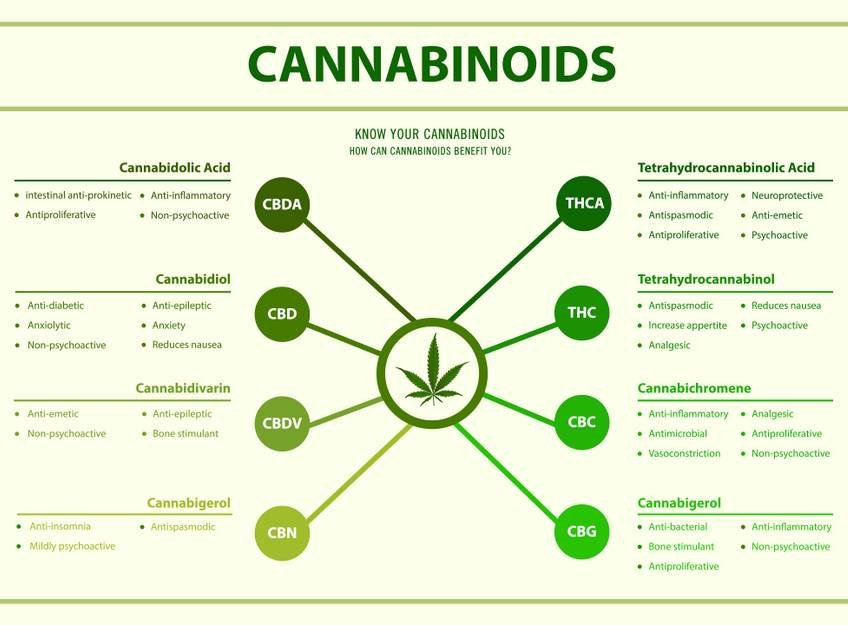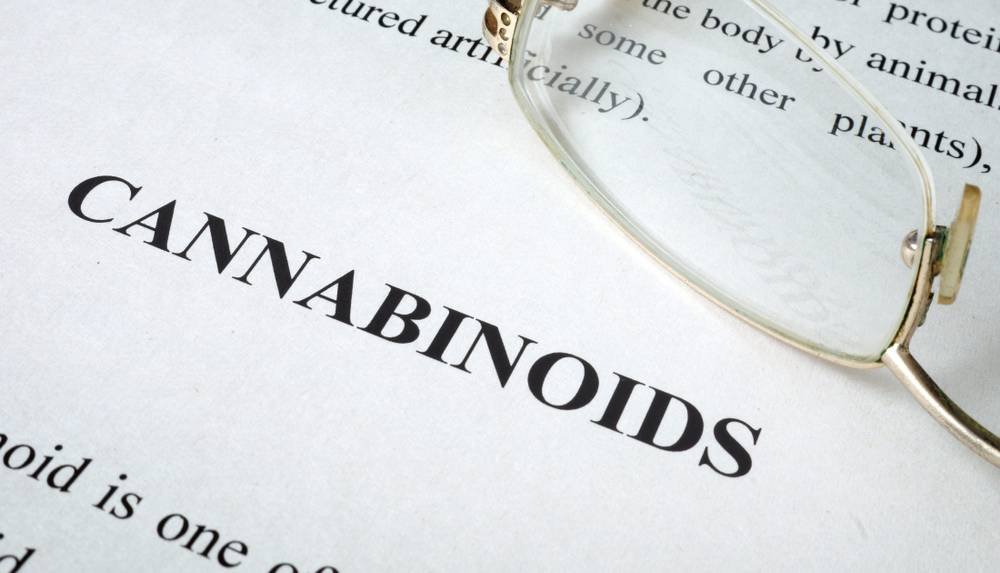Cannabinoids have gained widespread attention in recent years. Found in cannabis and hemp plants, cannabinoids are not a singular entity; instead, they comprise a diverse family of compounds including CBD and THC, each possessing unique properties and varied effects on the body.
In this article, we have provided a comprehensive understanding of cannabinoids, exploring what they are, their types, usage, and effects
What are cannabinoids?
Cannabinoids are plant-based compounds that are capable of influencing the body’s endocannabinoid system. Over 150 different types of cannabinoids have been discovered so far, each with unique health and wellness capabilities, while some also exhibit psychoactive effects.
Types of cannabinoids
Cannabinoids can be categorized into two main types: major cannabinoids and minor cannabinoids.

Major cannabinoids and their benefits
- Tetrahydrocannabinol (THC) is the primary psychoactive cannabinoid that is known for its euphoric effects, which can alter your perception, mood, and cognitive function. Beyond its recreational use, THC also has therapeutic benefits, including pain and inflammation relief, sleep promotion, and nausea reduction.
- Cannabidiol (CBD) is a non-psychoactive cannabinoid with diverse therapeutic benefits, like providing relief from inflammation, stress, anxiety, sleeping troubles, and chronic pain. CBD’s benefits and adaptability have led to its development in the wellness sector, resulting in an abundance of CBD product options on the market.
Minor cannabinoids and their benefits
- Cannabinol (CBN) is a cannabinoid that is not as well-known as THC or CBD. CBN has sedative properties and it is often found in many CBD products for sleep. Research on CBN suggests its potential applications in managing sleep and insomnia (1).
- Cannabichromene (CBC) is a non-psychoactive cannabinoid that has anti-inflammatory and analgesic properties. Though less studied compared to other cannabinoids, CBC shows promise in contributing to the entourage effect; where cannabinoids work synergistically to provide enhanced therapeutic benefits.
- Cannabigerol (CBG) is a non-psychoactive cannabinoid that is a precursor to other cannabinoids like THC and CBD. Research on CBG highlights its anti-inflammatory, antibacterial, and skin-health-boosting properties (2, 3).
- Tetrahydrocannabivarin (THCV) is a cannabinoid that has appetite-suppressant properties. Additionally, ongoing research is exploring its potential in weight management, diabetes, and metabolic disorders (4).
Delta-8 Tetrahydrocannabinol (delta-8 THC) is a minor cannabinoid that shares similarities with delta-9 THC (commonly known as THC). Delta-8, while less potent than delta-9, still produces psychoactive effects.
Delta-10 Tetrahydrocannabinol (delta-10 THC) is another minor cannabinoid that possesses psychoactive properties. It is found in trace amounts in the cannabis and hemp plant and is currently the subject of ongoing research.
How do cannabinoids work?

Cannabinoids exert their effects by interacting with the body’s endocannabinoid system (ECS), a complex cell-signaling system found throughout the human body.
This intricate system plays a crucial role in regulating various physiological processes and is also responsible for maintaining balance within the body.
Endocannabinoid System (ECS)
The ECS consists of three main components:
Endocannabinoids: These are cannabinoids naturally produced within the human body. Anandamide and 2-AG are two of the primary endocannabinoids.
Receptors: There are two main types of receptors in the ECS: CB1 receptors, primarily located in the brain and central nervous system, and CB2 receptors, predominantly found in the immune system and peripheral tissues.
Enzymes: Enzymes are responsible for breaking down endocannabinoids after they have served their purpose.
When cannabinoids from external sources, such as CBD and THC products, enter the body, they interact with the ECS, triggering distinct effects.
THC, the psychoactive cannabinoid associates with CB1 receptors in the brain, elevating dopamine levels for a euphoric experience.
On the other hand, CBD, the non-psychoactive cannabinoid, interacts with both CB1 and CB2 receptors to bring about equilibrium by offering relief from stress, anxiety, inflammation, and pain.
Cannabinoids also influence the immune system and inflammation through CB2 receptors. CBD and CBG are key players in this regulatory process, aiding the body in reducing inflammation and finding balance.
Additionally, certain cannabinoids also play a role in slowing down enzymes that break down endocannabinoids, which further enhances and prolongs their therapeutic effects.
Usage of cannabinoids
1. Recreational use:
Traditionally, the recreational use of cannabinoids has been synonymous with the consumption of THC-rich strains. People seeking a euphoric experience and altered perceptions often turn towards psychoactive cannabinoids, whether in the form of cannabis or hemp-derived THC products.
The psychoactive effects of THC can also induce a sense of relaxation, heightened creativity, and altered sensory perception.
2. Medicinal use:
The medicinal applications of cannabinoids, particularly CBD, have garnered immense attention and acceptance in recent years. The FDA has even approved a CBD-based medicine “Epidiolex” for seizures.
CBD is further being explored for its potential health benefits in managing various conditions like chronic pain and inflammation, stress and anxiety, epilepsy, sleep disorders, and addiction management.
3. Wellness and lifestyle:
Beyond traditional medical applications, cannabinoids have found their way into wellness and lifestyle practices. CBD, in particular, is being infused into an array of product options that are popular amongst people for managing overall health and wellness.
Hemp-derived CBD products are available in the market, in various product forms like CBD oils, gummies, edibles, flowers, capsules, beverages, and creams.
Final thoughts
Understanding cannabinoids involves recognizing the diversity within this family of compounds. While THC and CBD remain the most well-known, other cannabinoids like CBN, CBG, and CBC are emerging as subjects of interest for researchers and consumers alike.
Whether for recreational use, therapeutic purposes, or general well-being, the evolving landscape of hemp cannabinoids offers many possibilities for people seeking alternative approaches to a healthier lifestyle.
Disclosure:
The information in this article is intended for general use only and may not always be appropriate for everyone’s needs. Your health and wellness are unique to you, so before acting on anything we say, seek personalized advice from a medical professional.
We value the accuracy and editorial integrity of all our articles, and we strive to ensure that the content we publish is accurate and up-to-date to the best of our knowledge.

